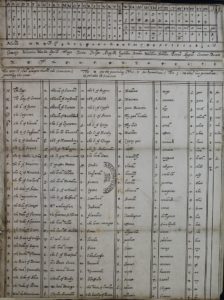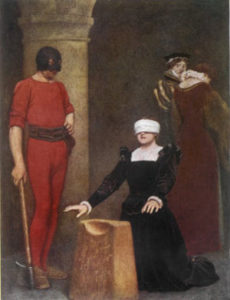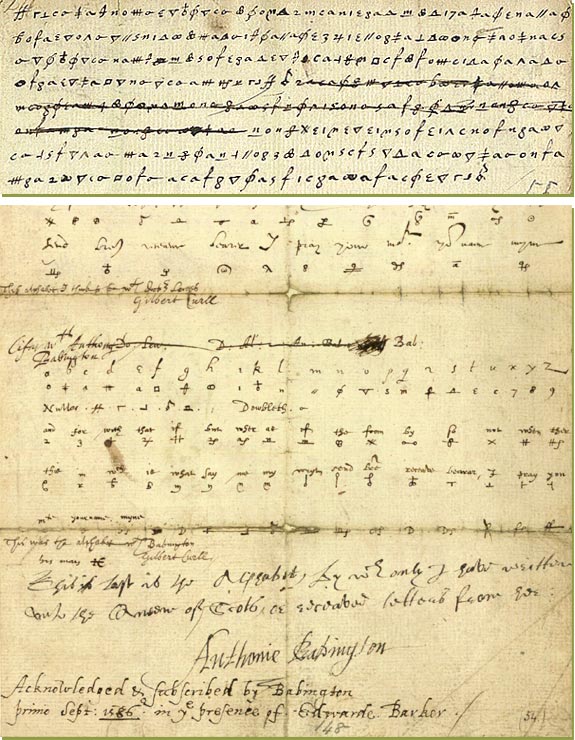
The breaking of the cipher of Mary, Queen of Scots, had grave circumstances and stands testament today for the need of nonpareil security. Passing messages, from one party to another, consisting of information of highly delicate and valuable nature, is something not always avoidable. For this reason, the making and keeping of codes and ciphers from being intercepted and broken by unwanted peoples is of the utmost importance. Failure of task, like in the case of the Mary Queen of Scots cipher, could have dire consequences. Death even.
And Death was such the consequence of Mary, Queen of Scots, cipher being broken. On February 8th, 1587, Mary, Queen of Scots, was beheaded, by order of Queen Elizabeth, as a direct result of her cipher not being secure enough.
Queen Mary, of Catholic dedication, had been imprisoned by the Protestant Queen Elizabeth for 19 years before the relay of correspondences which ultimately ended her imprisonment by beheading.
Mary had thought she was ‘secretly communicating’ with her Catholic supporters for overthrowing Queen Elizabeth, and her desire to bring restoration of the old religion to the English Crown. Not realizing her conspiratorial messages and plans were being read by secret and double agents for Queen Elizabeth, Mary, Queen of Scots, wrote, albeit in code, openly about her plans to assassinate her cousin.

The fatal messages were secured in a watertight stopper of beer barrels. They were intercepted, decoded, resealed, and passed forward to either Mary’s supporters or Mary herself, depending on which way the messages were going.
The evidence for Mary plotting to overtake the English Crown was irrefutable with these written records. Although she thought using a nomenclator, which was a cipher method guarding against frequency analysis attacks for decipherment, was secure, it failed. This failure provided Queen Elizabeth the power to order Mary’s execution, along with many of her numerous supporters, for treason against a foreign country.
It was said Queen Mary approached the cutting block bravely and took her punishment gladly for it would end all her worries.
Times were obviously turbulent, and those interested in learning more about the history and story behind would gain introduction with watching the movie, Elizabeth and it’s sequel, Elizabeth, the Golden Age.
Although it is a theatre portrayal of events, it does offer general historical accounts with entertainment.
“Do not tell secrets to those whose faith and silence you have not already tested” ~Elizabeth I
This post’s title, Mary Queen of Scots Cipher, was the winning title to the February MW newsletter Treasure Hunt game.
Sign up to the MW Newsletter for exclusive fun!



I think this cipher should be studied with great care & respect.
There seems to be a parallel with her life & death of course.
A shout out of congrats to Spallies. Great job gal! 😛
Congrats Spallies,
Congratulations, Spallies.
Thanks… 🙂 I am now 10 dollars closer
to Fennborre this year 🙂
Don’t you owe me 5$ Spallies?
This is really interesting. I can see two possible conspiracies. Was it Mary against Elizabeth, or Elizabeth against Mary?
History let’s us believe it was Mary who was the conspirator. But Walsingham was in control of the whole communication process.
When I look at the cipher key, it is clear that nobody could ever possibly decipher a message using that cipher without the key. However, I do see how a scoundrel could invent that key in order to make a benign message encoded with a different cipher say something treasonous.
Hmmm….. I really like the thought of that twist, Muset….. It questions the truth of how history was recorded….